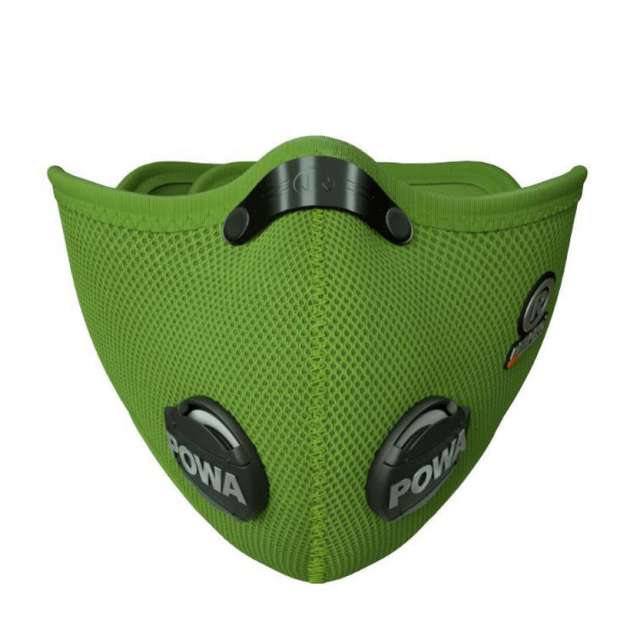Pollution blankets Hong Kong on Wednesday, with air quality hitting very unhealthy levels in some parts
The environmental authority said an airstream was transporting pollutants to the territory, but rain and cloudier weather in the coming days might lower pollution levels.Air pollution blanketed multiple areas of Hong Kong on Wednesday, with 14 of 16 air quality monitoring stations showing a “high” to “very high” health risk in the early afternoon, prompting the environmental authority to urge old people and children to stay indoors.
The warning came barely a day after official statistics indicated that Hongkongers endured nearly twice the number of days of unhealthy air last year compared with the previous year.
By 3pm on Wednesday, all but two air quality monitoring stations were showing readings of 7 to 10 on the 11-tier Air Quality Health Index.
Eastern District station had a reading of 6 while Tap Mun station is temporarily closed.
Several stations were forecast to have readings of 10+ or the “serious” health risk level, with ambient air readings at five – Mong Kok, Tuen Mun, Tung Chung, Kwai Chung and Tsuen Wan – hitting that level as at 5pm.
At levels of “very high” or above, children, the elderly and persons with existing heart or respiratory illnesses are advised to reduce or avoid physical exertion and outdoor activities.
In a statement, the Environmental Protection Department said it was detecting higher than normal levels of nitrogen dioxide (NO2) and particulate matter across the territory.
It cited an airstream affecting Hong Kong transporting pollutants to the territory, while light north-westerly winds hindered their dispersal. However, it said it expected cloudier weather and some rain patches in the next couple of days, which would help lower pollution levels.
The department had earlier said that warmer temperatures and less rain had caused more pollution last year.
In its statement on Wednesday, it said: “Sunshine enhances photochemical smog activity and the formation of ozone and fine particulates, resulting in today’s high pollution in the vicinity of Hong Kong.”
“The high level of ozone has promoted the formation of nitrogen dioxide, particularly in parts of the urban areas and at the roadside.”
At the Causeway Bay roadside station, one of three in the heart of the city, hourly NO2 concentrations were at 269 micrograms per cubic metre of air at 11am, far in excess of the 200 mcg hourly concentration limit set by the government under its current air quality objectives and the recommended safe level set by the World Health Organisation.
Tung Chung clocked in at 295 mcg for NO2 and 258 mcg for respirable suspended particulates, also known as PM10 and 182 mcg for fine suspended particulates, or PM2.5.
Ambient air monitoring stations in Sha Tin and Tseung Kwan O measured one-hour average concentrations of smog-inducing ozone as high as 138 mcg per cubic metre, which was more than double last year’s annual average of 51 mcg.
Hong Kong’s eight-hour mean concentration limit for ozone is 160 mcg, while the WHO sets its guideline value at 100 mcg.
Ozone, a secondary pollutant, is formed when nitrogen oxides and volatile organic compounds – emitted from vehicles, industrial activities and power plant emissions – mix in the air under sunlight. It is closely linked to regional pollution and sources of volatile organic compounds can come from anywhere within the Pearl River Delta area.
According to the WHO, excessive ozone in the air can have a “marked effect on human health” and can cause breathing problems, trigger asthma, reduce lung function and result in lung disease.
Data from last year released by the department on Tuesday showed ozone pollution had increased by 19 per cent in five years, and was at its worst level in nearly two decades. Roadside NO2 pollution also reversed three years of consecutive decline, climbing by 5 per cent.
The number of hours when readings on the index hit “high” or above at monitoring stations added up to 44 days last year, from 26 days the preceding year. At roadsides, about 55 days of high risk air were measured compared to 31 days in 2016.
-
RESPRO® MASKS
-
Pollution Masks since 1993 - The 'Original' and still the best - Made in the UK - respro.com
-
THE AIR WE BREATHE
-
The Respro® Bulletin Board is designed to keep you up to date with current views and issues relating to Air Pollution and its health implications in our daily lives.
-
WATCH OUR ANIMATION
TOP POSTS AND PAGES
- Follow Respro® Bulletin Board on WordPress.com
-
LOCAL AIR QUALITY
-
Click the map to find out about current air quality levels where you live.

-
FOLLOW RESPRO®
-
WHY WEAR A MASK?
-
Essential features required of a mask to work properly: Why wear a mask?
-
For information on the products we provide please visit our website respro.com Respro® will ship your order of any product, any quantity to anywhere on the planet free of charge.
-
KEY POINTS TO A MASK
-
Three important points to look out for in an air pollution mask:
Key Points to a Mask -
SIZING GUIDE
-

-
TIME TO CHANGE YOUR FILTER?
-
THERE ARE FOUR RESPRO® FILTER TYPES
-

-
HOW TO CHANGE THE FILTER
-

-
BUY NEW FILTERS
-

-
RESPRO® ON INSTAGRAM
Air Pollution Air Quality Asthma Beijing Boris Johnson California Canada China Delhi Department for Environment Food and Rural Affairs (Defra) diesel exhaust fumes EU - European Union Europe forest fire France Germany HAZE Health Effects of Air Pollution India Indonesia Iran King's College London London London Mayor Malaysia Nitrogen Dioxide NO2 NOx Ozone O3 Paris PM - Particulate Matter PM2.5 PM10 Research Respro® Masks FAQ Respro® Products Scotland Singapore Smog Sulfur Dioxide SO2 Thailand UK USA vehicle emissions wildfires World Heath Organization (WHO)
-
CATEGORIES
- Africa
- Air Quality
- Allergies
- Asia
- Asthma
- Australia & Oceania
- Brazil
- Canada
- Chile
- China
- Colombia
- Cycling
- Europe
- Exercise & Air Pollution
- France
- Germany
- Hayfever
- Health Effects of Air Pollution
- Help & FAQs
- India
- Indonesia
- Iran
- Iraq
- Italy
- Japan
- Latin America
- London
- Malaysia
- Medical Studies
- Mexico
- Middle East
- Mongolia
- Philippines
- Poland
- Research on Air Pollution in the UK
- Respro® How To Videos
- Respro® Mask Reviews
- Respro® Masks
- Respro® Products
- Running
- Singapore
- South Korea
- Spain
- Sports
- Taiwan
- Thailand
- UK
- USA
- USA & Canada
- Vietnam
- World News
-















